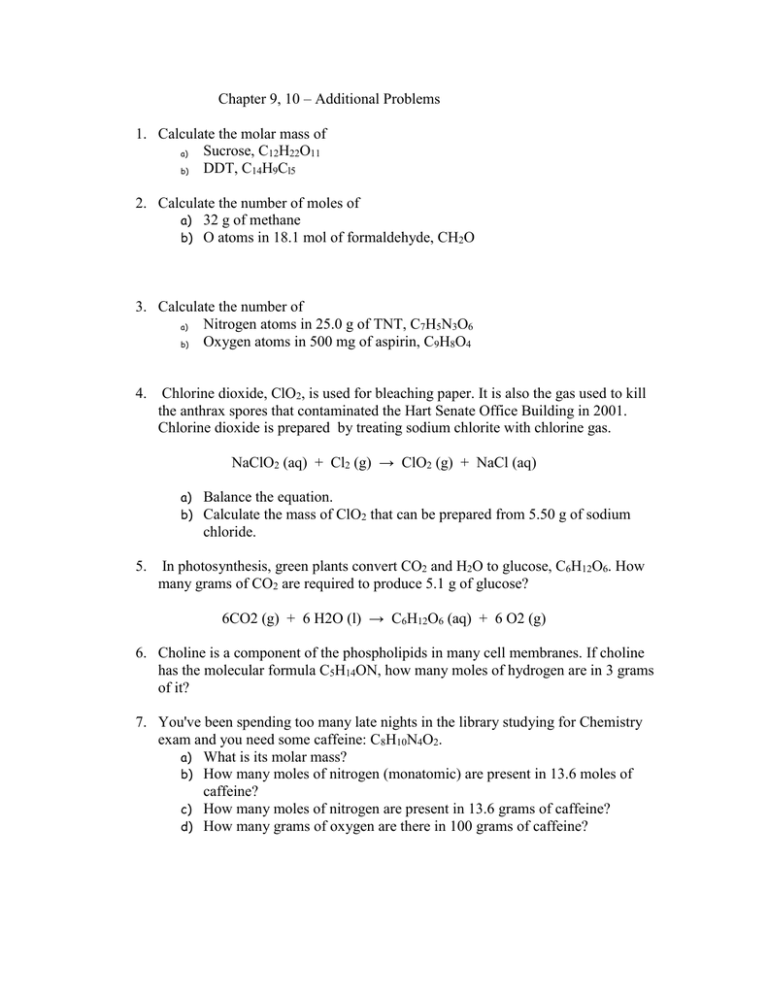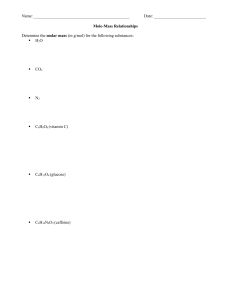Stoichiometry.doc
advertisement

Chapter 9, 10 – Additional Problems 1. Calculate the molar mass of Sucrose, C12H22O11 a) DDT, C14H9Cl5 b) 2. Calculate the number of moles of a) 32 g of methane b) O atoms in 18.1 mol of formaldehyde, CH2O 3. Calculate the number of Nitrogen atoms in 25.0 g of TNT, C7H5N3O6 a) Oxygen atoms in 500 mg of aspirin, C9H8O4 b) 4. Chlorine dioxide, ClO2, is used for bleaching paper. It is also the gas used to kill the anthrax spores that contaminated the Hart Senate Office Building in 2001. Chlorine dioxide is prepared by treating sodium chlorite with chlorine gas. NaClO2 (aq) + Cl2 (g) → ClO2 (g) + NaCl (aq) a) b) 5. Balance the equation. Calculate the mass of ClO2 that can be prepared from 5.50 g of sodium chloride. In photosynthesis, green plants convert CO2 and H2O to glucose, C6H12O6. How many grams of CO2 are required to produce 5.1 g of glucose? 6CO2 (g) + 6 H2O (l) → C6H12O6 (aq) + 6 O2 (g) 6. Choline is a component of the phospholipids in many cell membranes. If choline has the molecular formula C5H14ON, how many moles of hydrogen are in 3 grams of it? 7. You've been spending too many late nights in the library studying for Chemistry exam and you need some caffeine: C8H10N4O2. a) What is its molar mass? b) How many moles of nitrogen (monatomic) are present in 13.6 moles of caffeine? c) How many moles of nitrogen are present in 13.6 grams of caffeine? d) How many grams of oxygen are there in 100 grams of caffeine?


